7 Brilliant Examples of Inbound Marketing Campaigns
Reach the Top of Search Results with Amazing SEO Digital.
CONTENT MARKETING
Discover 7 Brilliant Example of Inbound Marketing Campaigns!

7 Brilliant Examples of Inbound Marketing Campaigns
Let’s face it, the landscape of digital marketing has seen a seismic shift. From intrusive pop-up ads to tailor-made content, marketing strategies have evolved to be more user-friendly and engaging. In this context, the rise of inbound marketing has been nothing short of revolutionary. Its strategy focuses on attracting customers by creating valuable content and experiences tailored to them.
Inbound marketing is all about weaving a magnetic narrative around your brand that pulls potential customers towards you instead of the other way around. So, how can you become a master storyteller in inbound marketing? Let’s dive in!
Understanding Inbound Marketing
Imagine you’re a humble bee buzzing around in search of the sweetest nectar. Now, wouldn’t you be more attracted to vibrant, fragrant flowers that offer the most delicious nectar? That’s what inbound marketing is all about – being the flower that attracts the bees or, in business terms, the customers.
It’s about creating and sharing valuable content in forms like blog posts, video content, infographics, and more, tailored to the interests and needs of your potential customers. The aim is to attract, engage, and delight your audience, fostering trust and credibility.
Inbound marketing is about building relationships, not just transactions. It’s about understanding your audience’s journey and creating content that addresses their pain points, offers solutions, and positions your brand as the go-to expert in your field. This approach helps to build trust and foster long-term relationships with your customers.
Remember, in inbound marketing, your content is your best salesperson. It’s about providing so much value that your potential customers feel compelled to come to you, not because they were pushed or persuaded, but because the quality and relevance of your content pulled them.
Inbound Marketing vs Outbound Marketing
In the red corner, we have inbound marketing, the lover archetype of marketing strategies, enticing and attracting potential customers with its charm and value-add content. In the blue corner, we have outbound marketing, the traditional approach that involves reaching out to consumers whether they want it or not.
Outbound marketing, often seen as “interruption” or “push” marketing, includes techniques like TV commercials, print ads, cold calls, and emails. While these methods can reach a broad audience, they are often perceived as intrusive and can lead to customer annoyance.
On the other hand, inbound marketing is like the modern-day Casanova of marketing techniques. It woos potential customers by providing them with the content they love at the right place and the right time. It’s a permission-based approach where businesses earn their way into the customer’s world through high-quality content, SEO, and social media marketing.
But here’s the catch – it’s not about choosing between inbound and outbound. Instead, it’s about striking the right balance. Inbound brings in the leads, and outbound helps to push the message to a broader audience, amplifying your marketing efforts. When used together, they can supercharge your marketing game.
The Right Content for Inbound Marketing Success
We all know that old saying, “Content is king,” but in the realm of inbound marketing, not just any content will do. It’s all about creating content that resonates with your audience, addresses their pain points, and positions your brand as the go-to expert.
Now, you might be wondering, what type of content does the trick? The answer is it varies. From blog posts and video content to infographics and podcasts, the type of content you should focus on depends on your audience’s preferences and the nature of your product or service.
For example, if you’re a B2B company offering complex solutions, whitepapers and case studies might be your best bet. On the other hand, if you’re a B2C company selling lifestyle products, engaging video content and blog posts could be the way to go.
Remember, it’s not just about creating content but creating valuable content that educates, entertains, and engages your audience. And that’s where content marketing comes in, a crucial part of inbound marketing that focuses on creating and distributing relevant and valuable content to attract and retain a clearly defined audience.
SEO and Inbound Marketing
Imagine crafting a masterpiece, a beautiful painting, but locking it away in a room. That’s what it’s like to create valuable content without optimizing it for search engines.
SEO is the key that unlocks the door to your content, making it discoverable to your potential customers. It’s a set of practices aimed at increasing the visibility of your website in search engine results, thereby driving more organic traffic.
SEO and inbound marketing go hand in hand. By optimizing your content with relevant keywords, meta descriptions, and quality backlinks, you increase the likelihood of your content being found by your target audience.
But remember, SEO isn’t just about pleasing the search engine robots; it’s about creating a user-friendly experience. After all, what’s the point of driving traffic to your website if your visitors bounce right off because they can’t navigate it?
So, when it comes to creating an effective inbound marketing strategy, SEO plays a crucial role. It’s about ensuring that your valuable content gets the visibility it deserves, reaching the right audience at the right time.
Five Inbound Marketing Strategies to Implement
Create Content that Offers Value: It’s essential to create content that resonates with your audience, addresses their pain points, and provides them with valuable insights. From blog posts and ebooks to webinars and podcasts, the content you create should educate, entertain, and engage your audience.
Optimize for SEO: To ensure your content gets the visibility it deserves, it’s crucial to optimize it for search engines. This involves using relevant keywords, creating quality backlinks, and ensuring your website is user-friendly and mobile-optimized.
Leverage Social Media: Social media platforms are a great way to distribute your content, engage with your audience, and build a community around your brand. From sharing blog content to engaging in social listening, social media can play a crucial role in your inbound marketing strategy.
Personalize Your Email Campaigns: Personalized emails can help you nurture your leads and convert them into customers. From sending welcome emails to sharing tailored content based on user behavior, personalized email marketing can significantly boost your conversion rates.
Track and Analyze Your Performance: Finally, it’s essential to track and analyze your performance to understand what’s working and what’s not. This can help you refine your strategies and make data-driven decisions.
7 Brilliant Examples of Inbound Marketing Campaigns
Now, let’s take a look at some examples of successful inbound marketing campaigns that can serve as inspiration:
HubSpot: HubSpot’s comprehensive library of educational content, from blog posts and ebooks to webinars, has established it as an authority in the inbound marketing field.
Mint: Mint’s personalized blog content and financial management tools have helped it attract over 20 million users.
Zappos: Zappos’s focus on customer service and engagement has turned it into a billion-dollar online shoe retailer.
GoPro: GoPro’s user-generated content strategy has not only engaged its audience but also provided it with a steady stream of content.
Buffer: Buffer’s transparent culture, combined with its valuable blog content, has helped it grow its user base exponentially.
Airbnb: Airbnb’s neighborhood guides provide valuable content to travelers, positioning it as more than just a booking platform.
Coca-Cola: Coca-Cola’s “Share a Coke” campaign, which personalized the brand experience, resulted in a significant increase in its sales.
Developing an Effective Inbound Strategy: Learn from the Best
Learning from these successful inbound marketing campaigns, here are some steps you can take to develop an effective inbound strategy for your own business:
Understand Your Buyer’s Journey: The first step is to understand your buyer’s journey – the process your potential customers go through to become aware of, consider and evaluate, and decide to purchase your product or service. This understanding will guide your content creation and distribution strategy.
Create a Content Strategy: Based on your understanding of your buyer’s journey, create a content strategy. This should involve defining the type of content you’ll create, the topics you’ll cover, and the platforms you’ll use to distribute your content.
Optimize for SEO: Make sure your content is optimized for search engines to increase its visibility. This involves using relevant keywords, creating quality backlinks, and ensuring your website is user-friendly and mobile-optimized.
Leverage Social Media: Utilize social media platforms to distribute your content and engage with your audience. From social media marketing to social media management, there are many ways to leverage social media for inbound marketing.
Personalize Your Marketing Efforts: From your email campaigns to your landing pages, personalization can significantly boost your conversion rates. Use data to understand your audience’s preferences and personalize your marketing efforts accordingly.
Analyze and Refine Your Strategy: Finally, it’s crucial to analyze your performance and refine your strategy based on your analysis. Use analytics tools to track your performance and make data-driven decisions.
Conclusion: Companies Doing Inbound Marketing Right
Inbound marketing, when done right, can help you attract the right audience, build trust, and grow your business. The examples discussed in this article highlight how companies leverage inbound marketing strategies to drive success. They are proof that you can achieve marketing success with the right content, SEO strategy, social media strategy, and personalized marketing efforts.
Now it’s your turn to get started with inbound marketing and create your success story. Remember, the key is to create content that offers value, resonates with your audience, and aligns with your brand. So go ahead, take the leap, and start creating!
Frequently Asked Questions
What are some examples of inbound marketing?
Inbound marketing examples can vary widely, but they all share the common goal of attracting potential customers to a brand by providing valuable content. These examples can include blog posts, eBooks, whitepapers, social media posts, webinars, and more.
How can I develop an inbound marketing strategy?
To develop an inbound marketing strategy, you should first understand your target audience and their needs. Then, create valuable content tailored to those needs. Also, make sure to optimize your content for search engines, and leverage social media and email marketing to distribute your content.
How can I use inbound marketing for my business?
You can use inbound marketing to attract potential customers to your business by providing valuable content that answers their questions or solves their problems. This approach builds trust with your audience, making them more likely to choose your product or service when they’re ready to make a purchase.
How does content marketing differ from inbound marketing?
While both content marketing and inbound marketing focus on providing valuable content to attract customers, they are not the same. Content marketing is a component of inbound marketing and focuses on creating and distributing valuable content. On the other hand, inbound marketing involves a broader set of strategies, including SEO, social media, and email marketing.
Why is search engine optimization important for inbound marketing?
Search engine optimization (SEO) is crucial for inbound marketing because it helps your content become more visible online. When your content ranks highly on search engines, more people can find it, increasing the chances of attracting potential customers to your business.
What type of content is used in inbound marketing?
Inbound marketing can involve various types of content, including written content like blog posts and eBooks, video content, podcasts, infographics, and more. The key is to create content that provides value to your audience and aligns with their needs and interests.
Boost Your Online Visibility with Our Expert SEO Services
Improve your Google search rankings and discover new consumers with the aid of our professional staff. Don't pass up your chance for internet success. We can help you get more targeted visitors to your website if you get in touch with us now to find out more about our search engine optimization services.



2 Responses